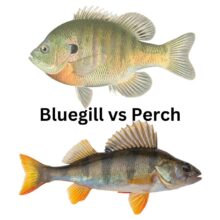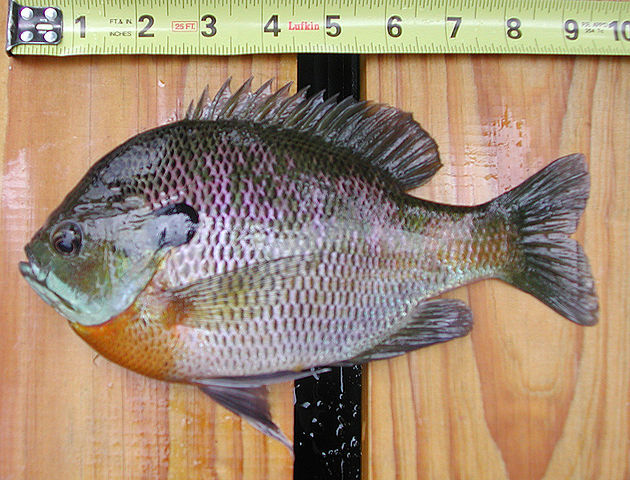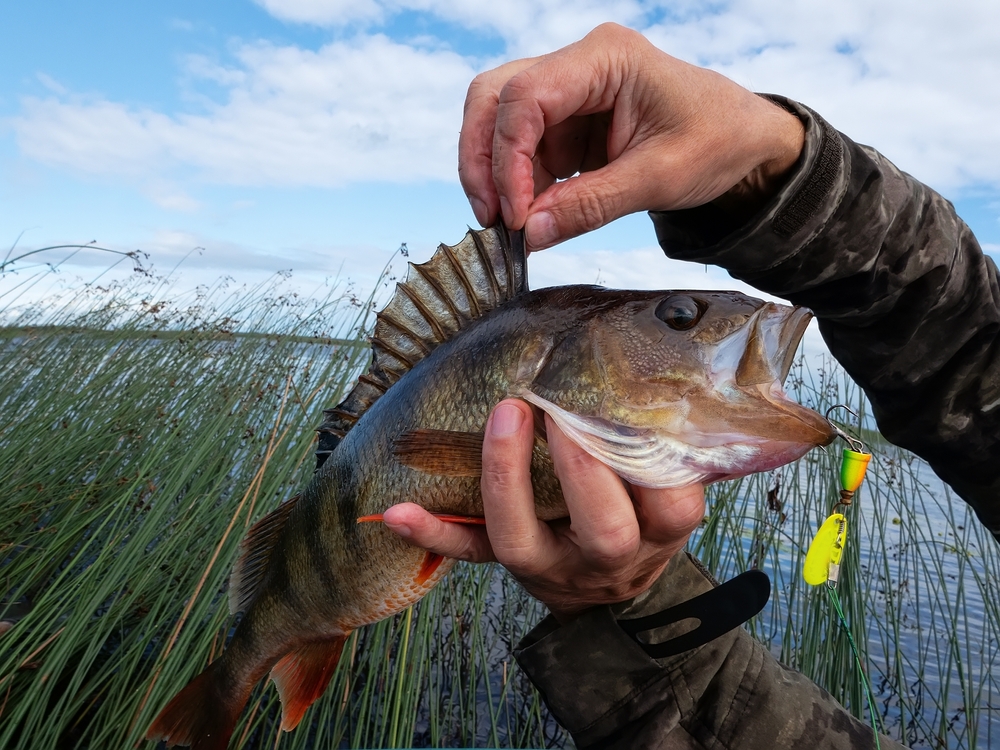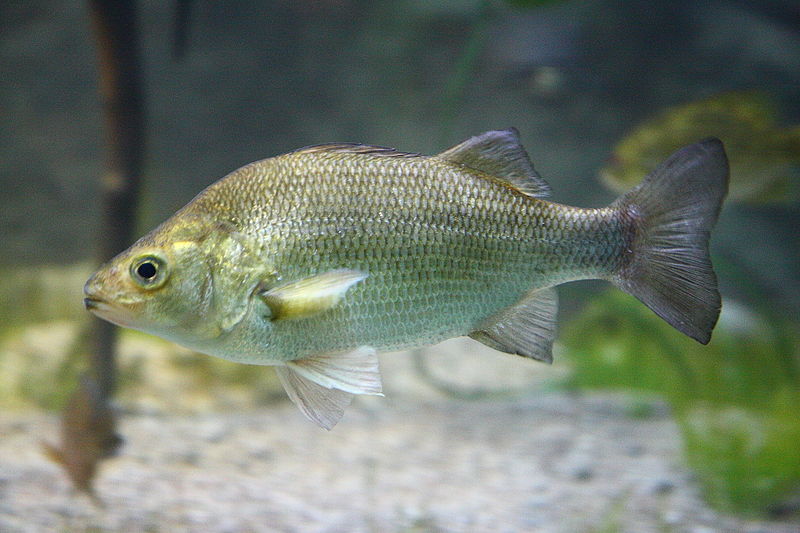This article may contain affiliate links. If you make a purchase after clicking on a link we may earn a small commission at no extra cost to you. As an Amazon Associate, I earn from qualifying purchases.
Bluegill vs Perch – What’s the Difference?

Bluegill and perch are two of the most popular freshwater fish species in North America and Europe. Both are members of the sunfish family, which also includes bream and bass.
Bluegill, also known as Lepomis macrochirus, is a type of sunfish that is found in ponds, streams, and lakes. They are typically yellow or green in color and have a distinctive black spot on their gill cover.
Perch, on the other hand, are members of the family Percidae and are found in freshwater habitats across North America and Europe. They are typically smaller than bluegill, with a more elongated shape and a darker coloration. Perch are carnivores and feed on a variety of small fish, crustaceans, and insects.
While both bluegill and perch are popular among anglers, they differ in several ways. Bluegill are known for their aggressive behavior and are often caught using a simple rod and reel setup. Perch, on the other hand, require a bit more finesse and are often caught using live bait or lures.
In terms of taste, both species are considered delicious when cooked properly, with bluegill being slightly sweeter and perch having a firmer texture.
Bluegill

Appearance
Bluegills are a type of sunfish that are best known for their striking blue and green coloration. They have a compressed, oval-shaped body with a small mouth and a long dorsal fin that is spiny at the front.
Also Read: Shellcracker vs Bluegill
The bluegill’s scales are small and have a dark border, which gives the fish a mottled appearance. On average, they grow to be between 6 and 10 inches long and weigh around 1 pound.
Habitats
Bluegills are found in a variety of habitats, including lakes, ponds, rivers, and streams. They prefer warm, shallow waters with plenty of vegetation, as this provides them with cover and a source of food. They are also known to congregate around submerged logs and other underwater structures.
Eating
Bluegills are opportunistic feeders that will eat just about anything that fits in their mouth. Their diet consists mainly of insects, crustaceans, and small fish. They are also known to eat algae and other plant matter. When fishing for bluegills, small live baits such as worms, crickets, and grubs are often used.
Fishing
Bluegills are a popular game fish, especially among young anglers. They are relatively easy to catch and provide a good fight on light tackle. They can be caught using a variety of methods, including baitcasting, spinning, and fly fishing.
Also Read: What Time of Day to Catch Bluegill?
When fishing for bluegills, it is important to use light tackle and small baits to match their small mouths.
Overall, bluegills are a popular and abundant species of panfish that are enjoyed by anglers of all ages. They are known for their striking coloration, opportunistic feeding habits, and willingness to bite.
Perch

Perch is a freshwater fish that belongs to the family of Percidae. It is a popular game fish that is enjoyed by anglers in North America and Europe. There are several species of perch, including yellow perch and European perch. They are often confused with other freshwater fish, such as bass and bream, but can be distinguished by their shape and eating habits.
Appearance
Perch have a distinctive shape with a round body and a pointed snout. They are usually greenish-yellow in color with dark stripes on their sides. Yellow perch have a more yellowish color, while European perch are more greenish-brown. They can grow up to 15 inches in length and weigh up to 4 pounds.
Habitats
Perch can be found in ponds, lakes, streams, and rivers throughout North America and Europe. They prefer clear water with vegetation and rocky bottoms. They are often found near underwater structures, such as fallen trees and rocks. Perch also like to hide in weeds and other vegetation.
Eating
Perch are carnivores and feed on a variety of small fish, insects, and crustaceans. They are known to eat minnows, darters, and other panfish. They are also a favorite food of larger fish, such as largemouth bass and pike. Perch spawn in the spring and their nests can be found in shallow water.
Fishing
Perch are a popular game fish and are often caught using a rod and reel. They can be caught using a variety of baits, including worms, minnows, and other small fish. They are also known to bite on artificial lures, such as jigs and spinners. Perch have a firm texture and are often compared to cod in taste.
White Perch

White perch, also known as silver perch, are often confused with yellow perch. They are a different species of fish, known as Abramis brama, and are native to Europe. They have a similar shape to yellow perch but are more silver in color. White perch are also a popular game fish, but are not as common as yellow perch in North America.
Other Species of Perch
There are several other species of perch, including rock bass, pumpkinseed, longear sunfish, and redbreast sunfish. They are all part of the genus Lepomis and are similar in appearance to yellow perch. They are also popular game fish and can be caught using similar methods as yellow perch.
In conclusion, perch are a popular game fish that can be found in freshwater habitats throughout North America and Europe. They have a distinctive shape and eating habits that distinguish them from other freshwater fish. They are a favorite food of larger fish, such as largemouth bass and pike, and are often caught using a rod and reel.
Bluegill vs Perch
Size
Bluegill and perch are both small fish, but bluegill tend to be slightly larger. Bluegill can grow up to 12 inches in length, while perch usually max out at around 10 inches.
Age
Bluegill and perch have similar lifespans, typically living for 4-6 years in the wild. However, bluegill tend to reach maturity faster than perch, with some individuals becoming sexually mature at just one year old.
Color
Bluegill and perch have distinct coloring that can help tell them apart. Bluegill have a blue-green back and yellow-orange belly, with dark vertical bars on their sides. Perch have a greenish-brown back and yellow-orange belly, with dark vertical stripes that run the length of their body.
Taste
Both bluegill and perch are popular game fish and are often eaten by humans. The taste of the two fish is often compared, with some people preferring the mild, sweet flavor of bluegill and others favoring the slightly stronger taste of perch.
In terms of nutrition, both fish are a good source of protein and omega-3 fatty acids. However, it is important to note that fish can accumulate environmental toxins, so it is recommended to limit consumption of fish caught in polluted waters.
Overall, while bluegill and perch have some differences in size, age, color, and taste, they are both popular game fish that provide a nutritious and tasty meal when caught and prepared properly.
